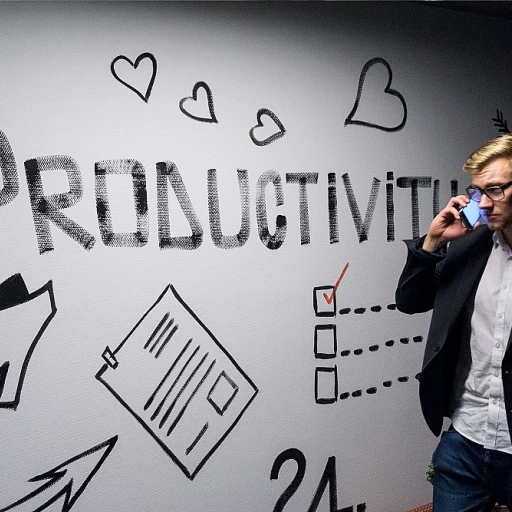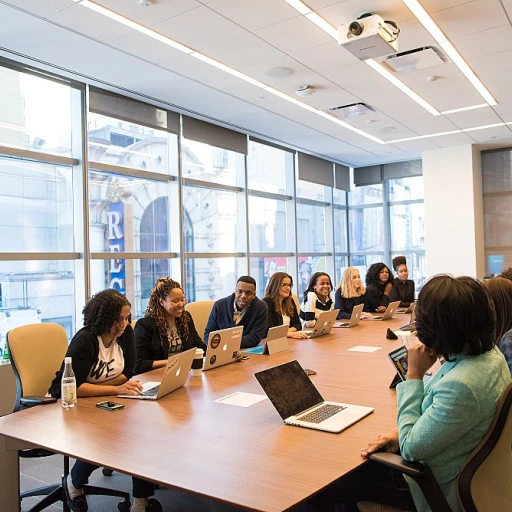Understanding Unfair Investigations at Work
Identifying and Understanding Unfairness in Workplace Investigations
Workplace investigations can be a fraught experience for both employees and employers, often exposing the complexities of intersecting factors such as workplace laws, CLS, and the investigative process. Unfortunately, these investigations sometimes fall short of fairness, leading to significant implications such as unfair dismissal or even legal action.
One main issue arises when employers fail to apply a structured investigation process, deviating from laws that govern workplace fairness. Employees might find themselves subject to biased processes without ample evidence or transparency, especially in cases involving sexual harassment or wrongful termination claims. In these scenarios, the need for a clear investigation path and legal advice becomes paramount.
Understanding what comprises an unfair investigation is crucial for all parties involved. It is necessary to maintain a process where employees and employers are given fair work opportunities to voice concerns, present evidence, and answer questions, ensuring all perspectives are considered. Investigations should be meticulously documented, with equal stroke width given to each party's narrative, avoiding a fill fff or an overly burdensome rule evenodd approach.
Moreover, when investigating workplace issues, organizations must ensure agreements and decisions adhere to the existing frameworks of law. Role clarity is important as each party involved should understand their rights and obligations under employment law.
The issue of fairness extends beyond rules and laws; it also involves examining how an investigation fills the working environment, how it affects employee morale, and whether it contributes to a transparent and trustworthy culture.
While striving for fairness is necessary, it's important to realize that legal processes can also be subjective, and here is where AI offers potential solutions—but with its own set of challenges and limitations to consider. For more insights into ensuring fairness, particularly through technology and AI, you may refer to
ethical technology in HR.
The Role of AI in Human Resources
The Transformative Power of AI in HR Processes
The integration of artificial intelligence in human resources has revolutionized how workplace investigations are conducted. Employers now have the capability to leverage AI tools in various ways, streamlining the investigation process while ensuring that it remains fair and unbiased. From gathering data to analyzing evidence and documentation, AI technology has the potential to enhance the accuracy of workplace investigations significantly.
AI systems can swiftly process large volumes of data, saving employees and employers valuable time in gathering information that is crucial during an investigation. This not only improves efficiency but also ensures that relevant evidence is considered, leaving less room for human error. Additionally, AI-driven tools can help ensure compliance with workplace laws by providing consistent interpretations of complex legal frameworks.
One of the key advantages of AI in human resources is its ability to reduce biases. Traditional investigation methods can inadvertently incorporate subjective views, which may lead to unfair dismissal or wrongful termination. AI tools can implement algorithms like the rule evenodd or stroke width analysis, drawing from a neutral perspective to answer questions related to investigations without prejudice.
Artificial intelligence assists in maintaining a detailed document trail. By automatically logging actions and decisions, it creates a reliable record that can be essential if a legal action arises. This comprehensive documentation can support the employer's position and provide the necessary evidence to resolve disputes fairly.
However, it is crucial for human resources departments to carefully select the right tools to ensure they are adhering to fair work principles and maintaining trust among employees. As AI-driven HR solutions continue to evolve, the role of human oversight remains vital to address any nuances or unique aspects of a case that an algorithm might miss.
The evolving role of AI in human resources highlights its importance in creating a fair, efficient, and complaint-free environment. For more insights on how technology is shaping HR processes, consider exploring the
evolving role of the chief people officer in the age of AI.
AI-Driven Tools Enhancing Fairness in Investigations
Integrating artificial intelligence into workplace investigations has become a critical measure to ensure fairness in human resource practices. AI offers a range of tools and technologies that can significantly enhance the investigation process, starting from evidence gathering to ensuring compliance with workplace laws.
- Data Collection and Analysis: AI tools facilitate the efficient collection and analysis of digital evidence. For instance, these technologies can analyze communications within an organization to identify potential issues related to unfair dismissal or wrongful termination. By automating this process, employers save time while maintaining objectivity.
- Minimizing Human Bias: During investigations, human bias can unintentionally affect outcomes. AI tools, governed by defined cls and fill rules, offer an unbiased approach by focusing on data-driven evidence. This helps maintain impartiality and ensure that all parties involved receive a fair evaluation.
- Real-Time Monitoring: AI-powered systems can monitor workplace interactions in real time, flagging any instances of sexual harassment or other violations of workplace guidelines. This proactive approach ensures swift responses to complaints and compliance with regulations.
- Facilitating Communication: AI tools can help document and manage communication between parties more systematically. With structured frameworks like the cls fill and rule evenodd, AI ensures conversations stay on track, addressing key issues and reducing any legal risks by adhering to workplace laws.
AI's ability to enhance fairness and accuracy is undeniable. However, it is essential to be aware of the challenges and limitations posed by these technologies in workplace investigations. Learn more about these intricacies with insights from the comprehensive analysis of
AI code verifier performance metrics.
Challenges and Limitations of AI in HR
Complexities and Constraints of AI-run HR Solutions
AI's capabilities in transforming HR processes can be overshadowed by its inherent challenges and limitations. While AI can significantly streamline workplace investigations, there are critical areas where limitations are evident.
Firstly, the potential for bias remains a pressing concern. Although designed to enhance fairness, AI systems can inadvertently incorporate biases present in their training data. If left unchecked, this can lead to unfair workplace investigations, resulting in wrongful termination or unfair dismissal. Employers must ensure continuous monitoring and updating of AI models to prevent such issues.
Moreover, AI's decision-making processes lack transparency, often termed as a 'black box'. This opacity complicates the ability of HR managers and employees to understand how decisions are reached, making it difficult to provide legal advice or take legal action when necessary. Transparency ensures that every path the AI follows during workplace investigation processes adheres to workplace laws and agreements, providing clarity and understanding for all parties involved.
The integration of AI into HR requires substantial investment in technology infrastructure and employee training. Firms must invest both time and resources into keeping AI tools updated, ensuring that they are aligned with current employment laws and respond accurately to real-world employee and employer concerns.
The potential impact on employee morale must not be underestimated. Reliance on AI may cultivate resignations if employees feel disconnected from the human element of HR processes. Striking a balance between AI and human oversight helps maintain employee satisfaction and engagement.
Finally, the legal landscape remains a challenge with AI in HR. Employment laws must adapt to the evolving technological environment or risk leaving employees vulnerable. Amendments and new policies are needed to ensure that AI-enforced rules such as cls fill and rule evenodd are compliant with fair work regulations.
In conclusion, while AI presents vast opportunities for fair and efficient workplace investigations, organizations must navigate its complexities carefully. Rigorous oversight, continuous monitoring, and a commitment to fairness are essential to realizing the potential benefits while minimizing risks.
Case Studies: AI in Action
Real-World Examples of AI Enhancing Workplace Investigations
AI adoption in workplace investigations is becoming more prevalent, providing employers and employees with efficient tools to ensure fairness. Below are some case studies highlighting how AI facilitates fair work processes.
Enhancing Evidence Collection with AI
In a large multinational corporation, the deployment of AI tools has improved the collection and analysis of evidence during workplace investigations. Utilizing machine learning algorithms, the organization successfully scanned vast amounts of documents and communications, identifying relevant evidence to assist in resolving disputes over claims of sexual harassment. The speed at which AI processed this data not only saved time but also ensured a comprehensive understanding of the incident, allowing the investigation to move forward with confidence other documents might have been overlooked by human inspectors.
Ensuring Fairness in Employee Grievances
In another instance, a tech company faced challenges regarding alleged unfair dismissal. They implemented AI-driven solutions to provide a balanced view of the situation by examining employee performance data, leave history, and agreements. Through the AI's capabilities in pattern recognition, they were able to determine inconsistencies and corroborate employees' claims vis-a-vis workplace laws. This investigation process occurred transparently, reassuring all parties involved of its fairness.
Automating Decision-Making in Dispute Resolutions
A financial services firm leveraged AI to automate parts of its investigation process into workplace disputes. The AI system was designed to administer questions that align with employment laws, decide on the relevance of information, and support HR teams in understanding the sequence of events. The AI's assistance in sorting through dense data reduced bias in decision-making and provided real-time legal advice, which was pivotal in addressing wrongful terminations and even clarifying cls fill or cls rule evenodd discrepancies legally connecting with their dedicated employment lawyer.
Each of these examples illustrates the potential of AI to transform workplace investigations. While challenges persist, as explored in preceding sections, these real-world applications demonstrate that AI is gradually carving an indispensable path towards fair work environments, ensuring that evidence and investigations are handled with rigor and impartiality.
Future Trends in AI for HR Investigations
Embracing AI for Future Workplace Clarity
In the evolving landscape of human resources, the path forward for workplace investigations is undeniably intertwined with the advancements in artificial intelligence. As we've explored how unfair investigations can impact both employees and employers, leveraging AI to monitor and streamline these procedures is becoming a necessity.
AI’s ability to process vast amounts of information and identify patterns through algorithms like cls fill or rule evenodd can significantly enhance the investigation process. This capability is crucial in complex cases such as wrongful termination or sexual harassment, where time is of the essence, and evidence must be meticulously scrutinized. AI technology facilitates fair investigations by analyzing document trails and ensuring that all parties involved are represented fairly, reducing the risk of bias.
However, even with its strong points, AI is not without its limitations. The current technology cannot operate without human oversight, particularly when navigating the nuances of workplace laws and agreements. Employment lawyers often advise that while AI can provide legal advice on regulations like unfair dismissal or workplace investigations, the final judgment should always be corroborated by human insight.
Looking to the future, AI is likely to incorporate more sophisticated natural language processing tools to better understand the context in employee communications. This could greatly enhance assessments of employee satisfaction and fair work conditions. Additionally, investing in AI could streamline employer responses to employee grievances, allowing for proactive rather than reactive workplace management.
As we consider these future trends, it's important for organizations to remain aware of their implementation strategies. Ensuring the technology is aligned with both ethical standards and employee expectations will be vital. Moving forward, stakeholders must foster a collaborative approach between AI-driven solutions and human expertise to guarantee transparency and fairness in workplace investigations.













